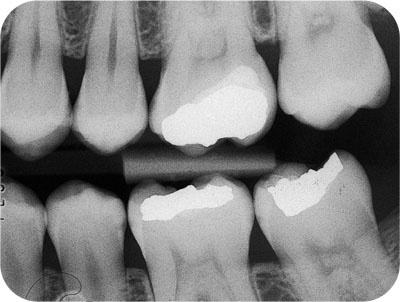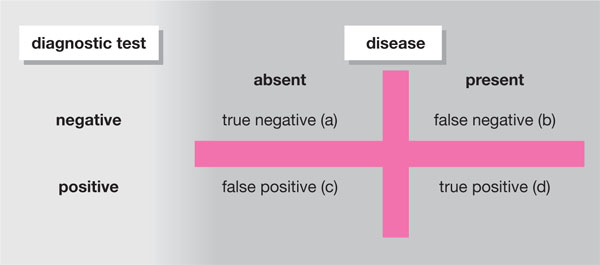Chapter 1
Clinical Diagnosis of Dental Caries. Is it Caries?
Aim
With changing patterns of disease experience the diagnosis of caries, particularly in its early stages, continues to be difficult for clinicians. The aim of this chapter is to improve understanding of modern methods of caries diagnosis.
Outcome
Practitioners will be familiar with modern methods of detecting dental caries and their relevance to contemporary dental practice.
Introduction
The pattern of dental caries has changed in recent years, with smooth surface lesions becoming less common and new lesions more likely to develop in pits and fissures. It is arguably easier to diagnose early caries on smooth surfaces (with the exception of proximal surfaces) than in pits and fissures, particularly when occult occlusal caries is present. In this condition the tooth can appear sound when examined visually but on radiographic examination there is extensive caries affecting the dentine (Fig 1-1).

Fig 1-1 Radiograph showing caries as follows: mesial 16, distal and mesial 15, distal 45, mesial and distal 46 and mesial 47.
Diagnostic Tests
With all diagnostic tests there is potential for operator error. For example, four outcomes are possible when a diagnostic test is applied to detect caries. These are as follows:
True positive
This occurs when caries is present and the test correctly identifies this. A good diagnostic test will have a high percentage of true positive outcomes.
False positive
A false positive result occurs when a diagnostic test incorrectly identifies caries when caries is not present.
True negative
This outcome is the opposite of a true positive result. It occurs when the test correctly identifies an individual as caries free and they are, in fact, free of the condition.
False negative
If a patient has caries and the test incorrectly deems them to be caries free then the outcome is defined as false negative.
These four possible outcomes of a diagnostic test are summarised in Fig 1-2.

Fig 1-2 Diagrammatic representation of diagnostic test outcomes.
Sensitivity and Specificity
Sensitivity and specificity are both measures of how accurate a diagnostic test is in terms of its ability correctly to identify individuals as diseased and non-diseased. Sensitivity is defined as the proportion of true positives that are correctly identified. It is calculated as follows (true negative = a, false negative = b, false positive = c, true positive = d):

The numbers of true positives and false negatives are related numerically; hence the proportion of true positive results for a diagnostic test (sensitivity) is 1 minus the false negative rate.
Specificity is the proportion of correctly identified true negative results and this is 1 minus the false positive rate. It is calculated as follows:

A good diagnostic test would have both high specificity and high sensitivity, which means the number of times the test is likely to give an incorrect result is low. In practice, as the level of either sensitivity or specificity rises, the other falls, so a balance must be struck.
The sensitivity and specificity of diagnostic tests commonly used to detect dental caries are shown in Table 1-1.
| Test | Sensitivity | Specificity |
| Visual examination | 0.38 | 0.99 |
| Transillumination | 0.67 | 0.97 |
| Radiographs | 0.59 | 0.96 |
| Laser | 0.76-0.87 | 0.72-0.87 |
| Electrical conductance | 0.80-0.97 | 0.56-0.89 |
Visual Examination
Visual examination of a tooth is the most widely used method of diagnosing dental caries. This method is, however, incredibly inaccurate. The use of a probe, blunt or otherwise, is contraindicated as it is a poor test of the presence of caries and likely to cause cavitation of an early demineralised lesion. Probes should there/>
Stay updated, free dental videos. Join our Telegram channel

VIDEdental - Online dental courses


